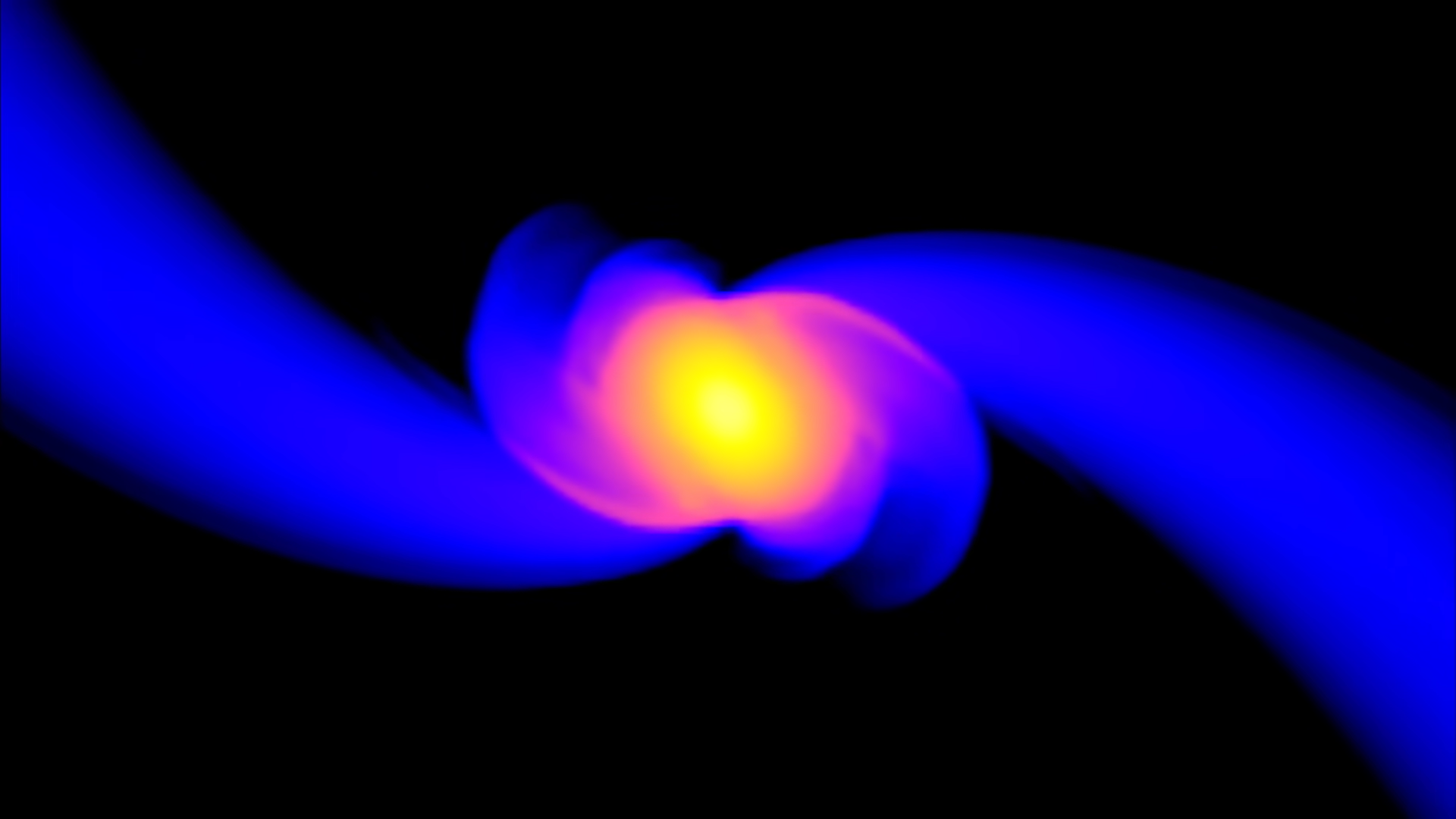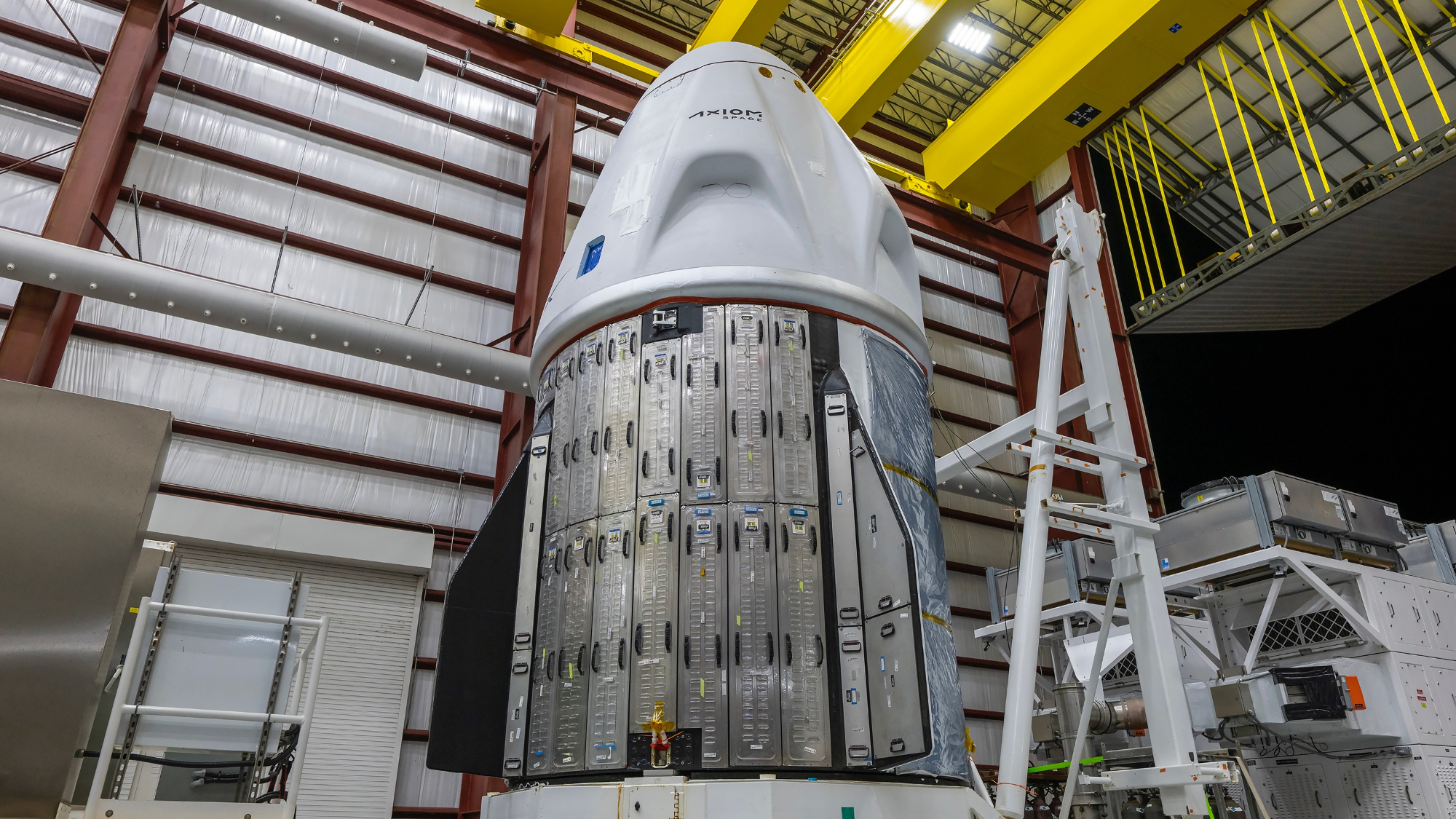Watch a virtual black hole rip apart 4 stars like a cosmic Hunger Games in this stunning NASA simulation
A little density is effective in fighting back.
May the odds be ever in these stars' favor.
A new NASA video shows the Hunger Games-like chaos that ensues after a bunch of simulated stars are virtually lobbed at a huge black hole.
This messy battle creates colorful swirls of material in the supercomputer simulations, showing scientists what happens when so-called "unlucky" stars stray close to a black hole. NASA says the goal is to figure out what happens during tidal disruption events that tear stars apart in real life.
"Gravitational forces create intense tides that deform the stars and break them into streams of gas," the agency explained in the Nov. 24 YouTube video.
The simulations, the agency added, are the first to include virtual stars with realistic internal structures, along with physics predicted by Einstein's general theory of relativity that describes the structure of space-time.
Related: Black hole photos could get even clearer with space-based telescopes

The version of the simulations shown in the video showcases a supermassive black hole with a mass 1 million times that of our own sun. The stars are straying very close to this huge object, at a distance of about 24 million miles (38 million kilometers) — or less than half the distance of Mercury's orbit around the sun.
Get the Space.com Newsletter
Breaking space news, the latest updates on rocket launches, skywatching events and more!
The virtual stars range in size, anywhere from one-tenth to 10 times the sun's mass, and you can see their densities by the colors, NASA explains in the video. Lower densities are shown in blue and higher densities are in yellow.
Next, you can watch the result as these stars fight back against the black hole. The simulations suggest that it's higher density, instead of stars with larger mass, that allows them to survive, which is not what scientists expected, the agency says.
The simulations were led by Taeho Ryu, a fellow at the Max Planck Institute for Astrophysics in Germany. In a press release, NASA noted that Ryu and his team also looked at other parameters in learning about tidal disruption events, such as the masses of the black holes and the distance of the stars' approach.
"The results will help astronomers estimate how often full tidal disruptions occur in the universe, and will aid them in building more accurate pictures of these calamitous cosmic occurrences," NASA added in the release.
Follow Elizabeth Howell on Twitter @howellspace. Follow us on Twitter @Spacedotcom and on Facebook.
Join our Space Forums to keep talking space on the latest missions, night sky and more! And if you have a news tip, correction or comment, let us know at: community@space.com.

Elizabeth Howell (she/her), Ph.D., was a staff writer in the spaceflight channel between 2022 and 2024 specializing in Canadian space news. She was contributing writer for Space.com for 10 years from 2012 to 2024. Elizabeth's reporting includes multiple exclusives with the White House, leading world coverage about a lost-and-found space tomato on the International Space Station, witnessing five human spaceflight launches on two continents, flying parabolic, working inside a spacesuit, and participating in a simulated Mars mission. Her latest book, "Why Am I Taller?" (ECW Press, 2022) is co-written with astronaut Dave Williams.
